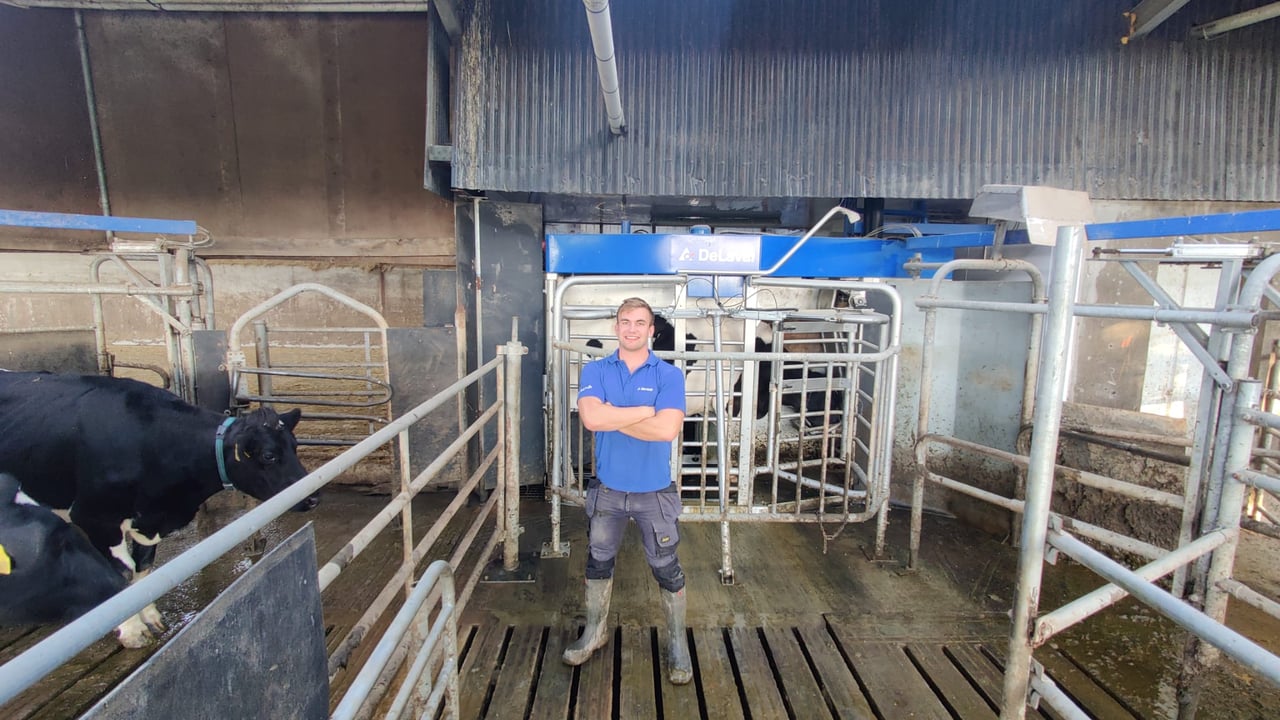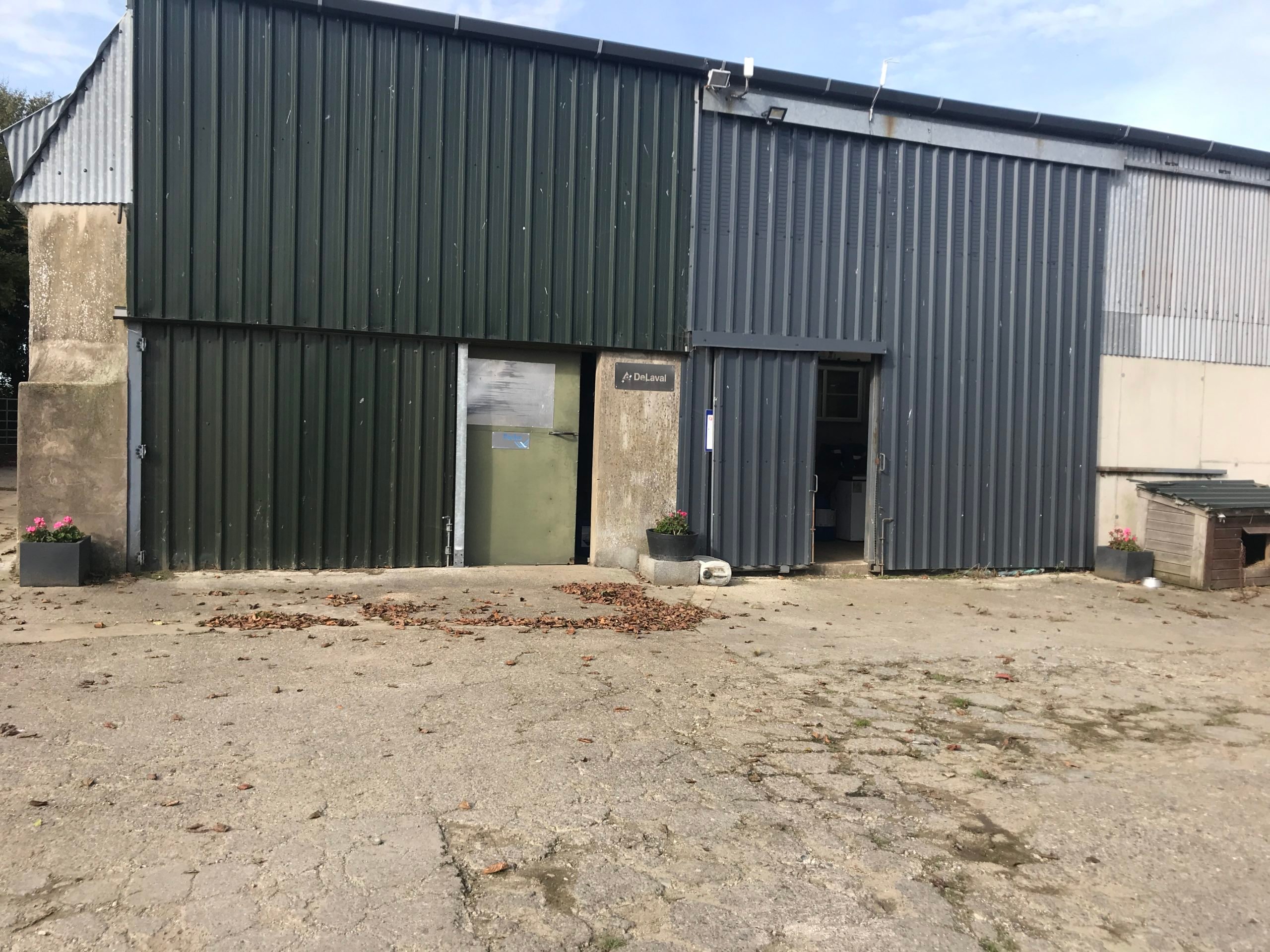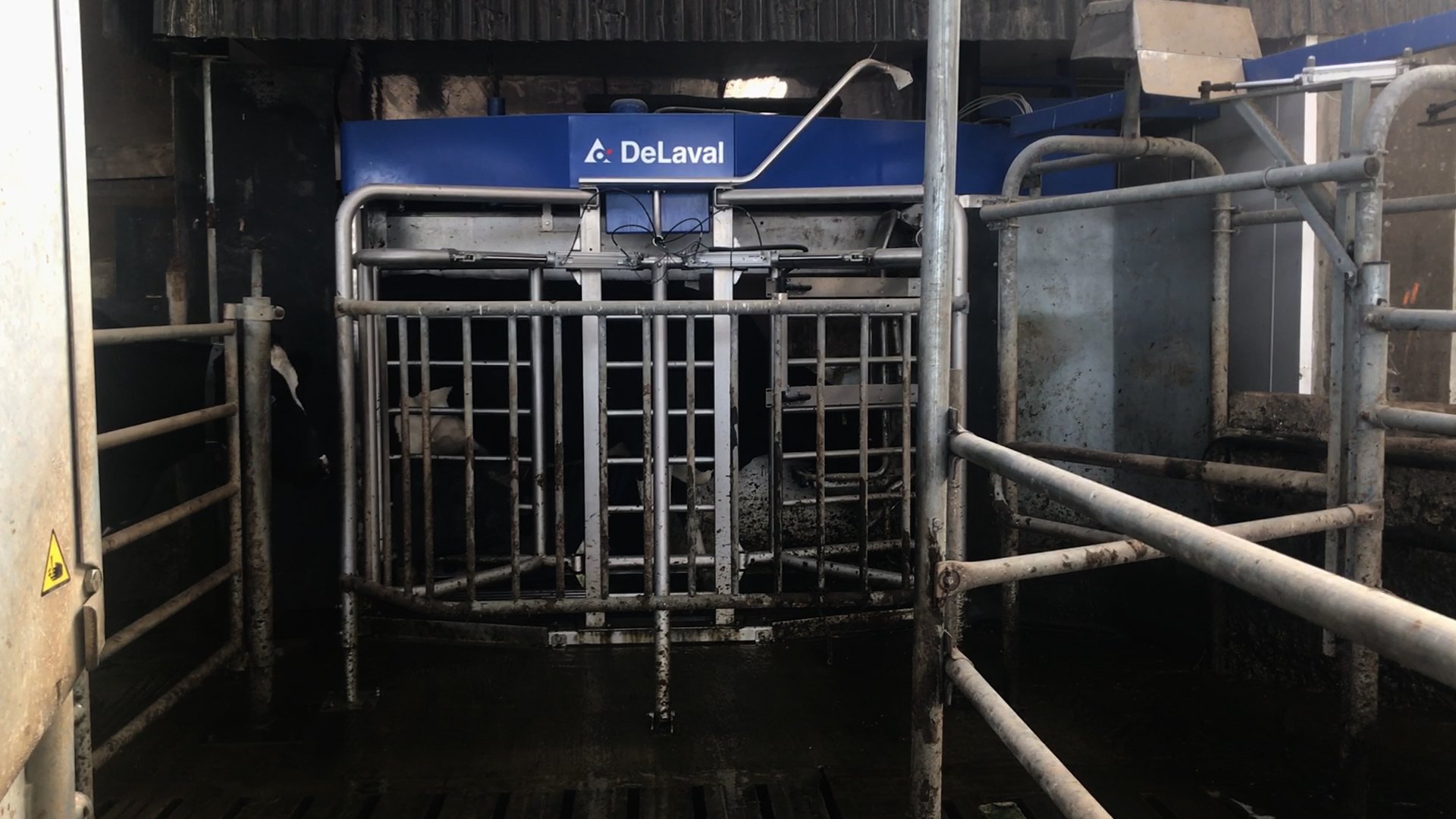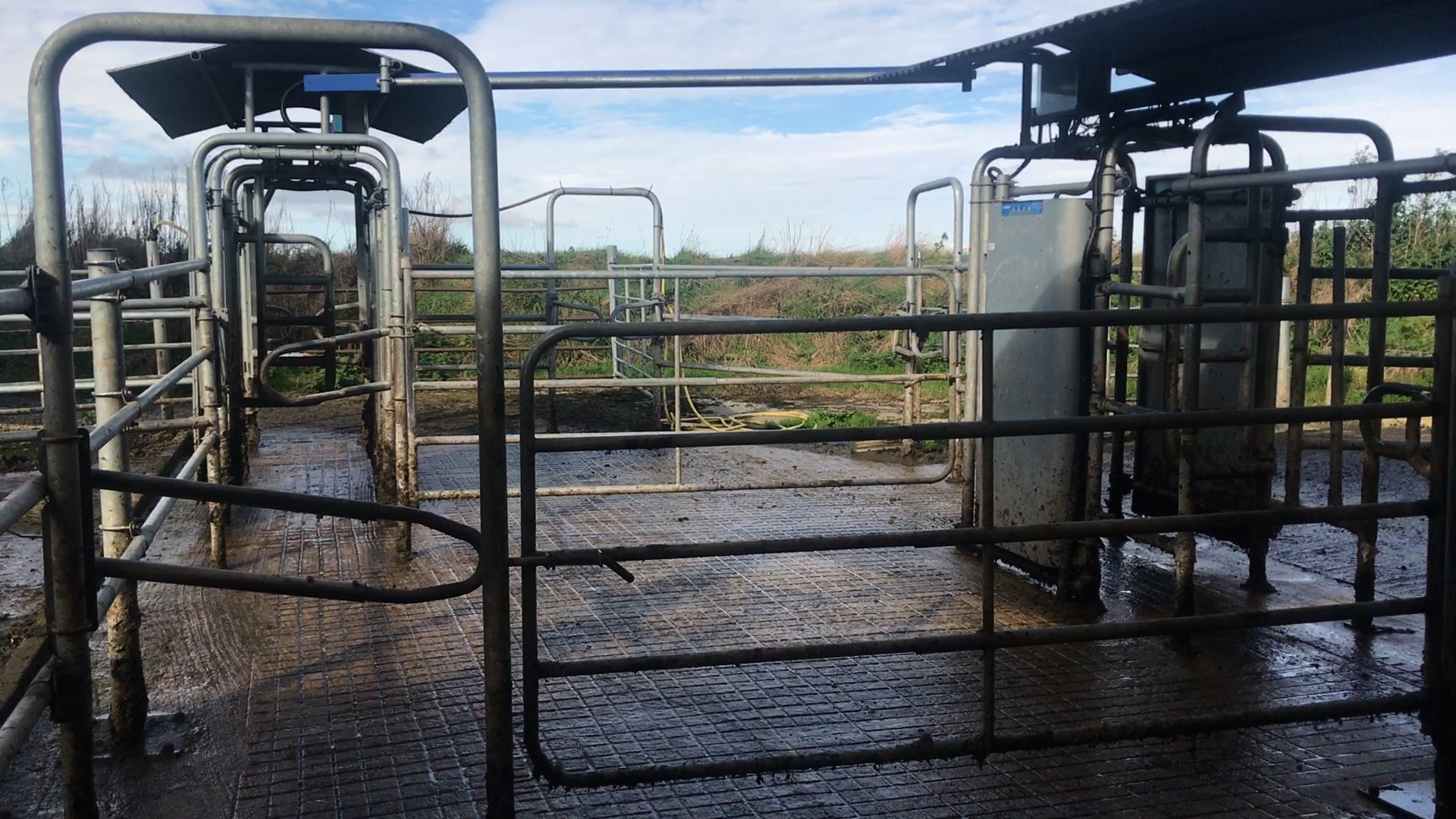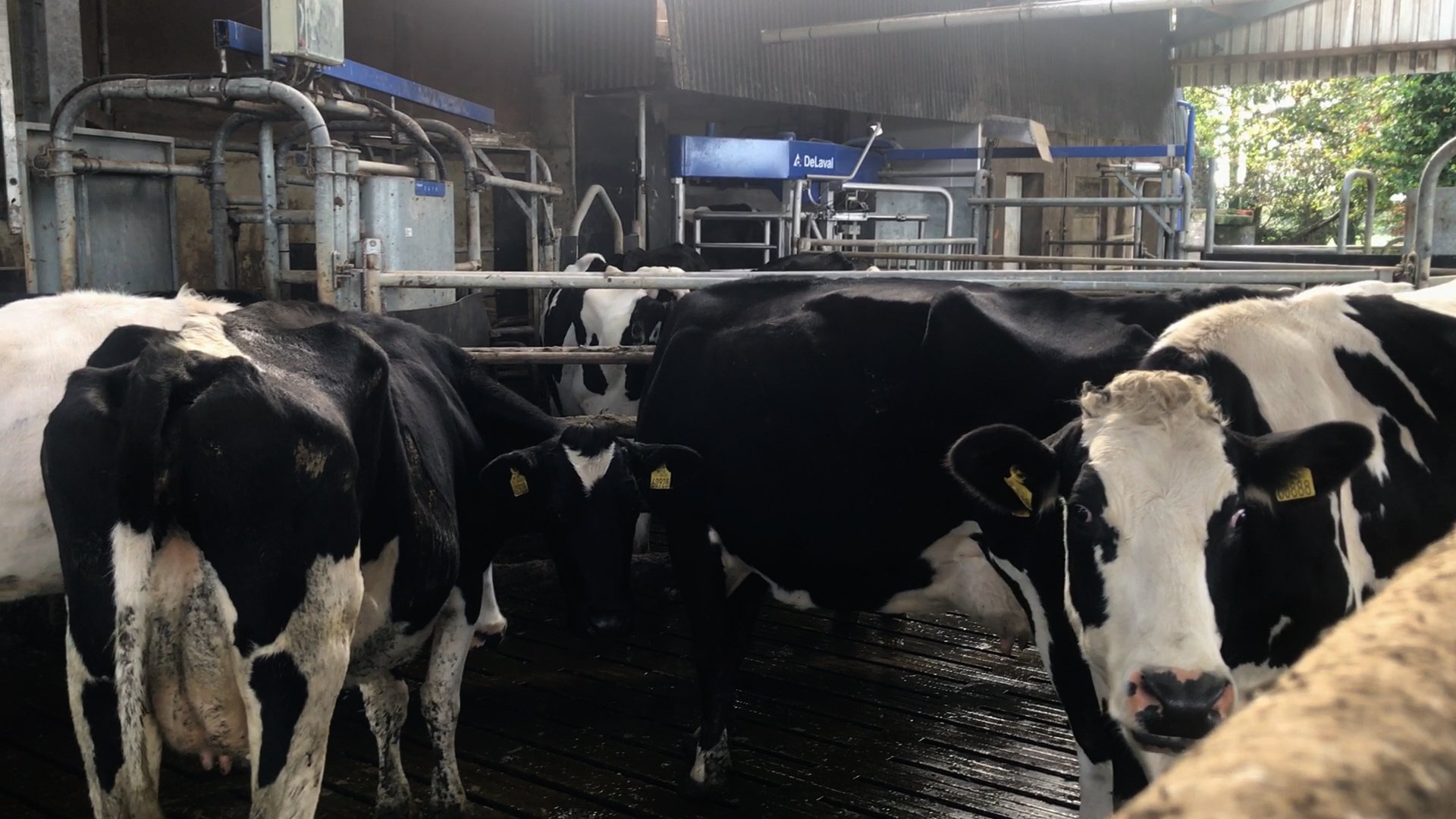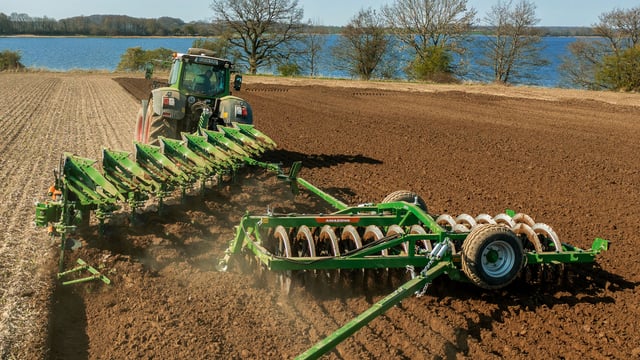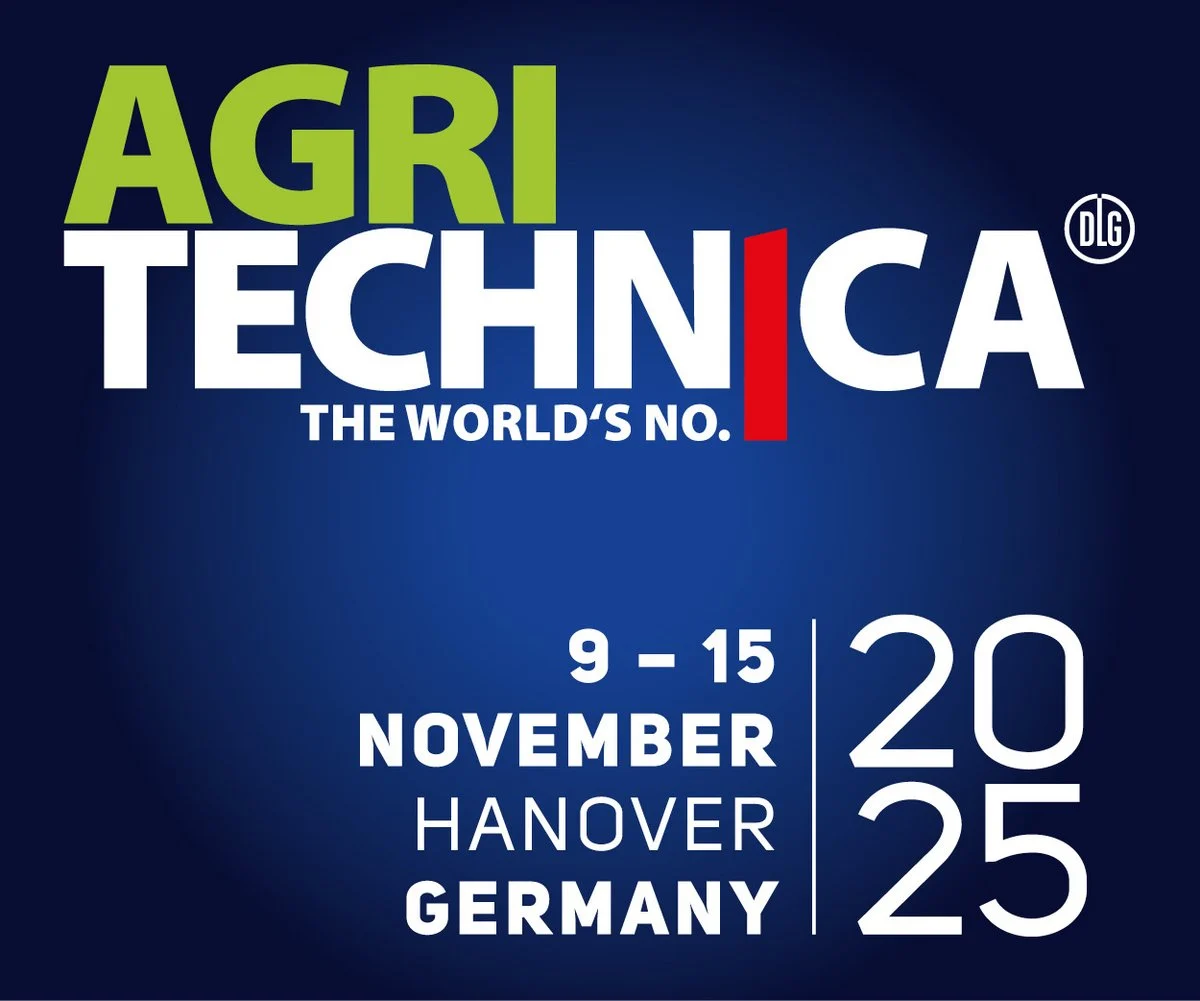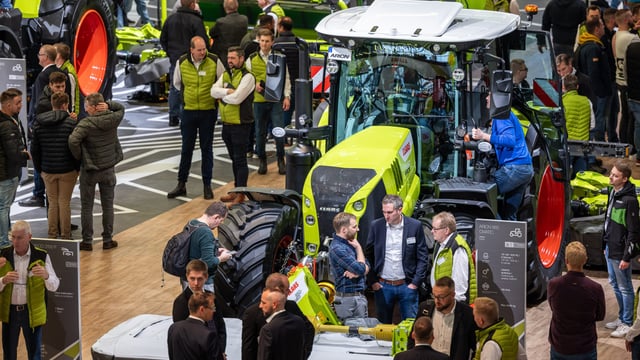Dairy Focus: Milk quality to the fore in robotic milking herd
In this week’s Dairy Focus, Agriland made the trip to the model county to meet with Andrew Walsh on his robotic milking dairy farm near Kilmuckridge.
The Co. Wexford man farms alongside his father, James, and 87-year-old grandfather, who remains actively involved in the farm.
Andrew said: "Grandad does as much as he can get away with; he's never idle for too long."
The Walshes are currently milking 80 mainly Holstein Friesian cows through a DeLaval V310 robot, along with a calf-to-beef system and a tillage operation.
Commenting on some of the farm's dairy history and why a robot was introduced onto the farm, Andrew stated: "My grandfather's mother started milking cows by hand on a three-legged stool.
"My grandfather then upgraded to a bucket plant and was milking around 15 cows.
"He was restricted by quotas, so the max cow number he would have gotten to was 47 cows."
In 2014, James needed surgery to fix a back injury, which meant he could no longer milk the cows. Andrew was in his second year studying Agricultural Science at University College Dublin (UCD) and labour was hard to come by.
"Getting someone in to milk was an issue; you could maybe get someone for a few weeks but then they wanted to move on.
"A few years previous we had seen robotic milking machines working, but had kind of laughed them off as never being for us. It seemed too futurist and there is obviously a large investment required.
"But when we were weighing up our options and started looking at robots on farms we could see how it could work for us.
"So we have gone from the three-legged stool right through to the robotic system.
"I wouldn't say having the robot gives you more time off, your focus just changes, you become more focused on the grass."
The Walsh family were nominated for the NDC Milk Quality Awards in 2013, so maintaining that milk quality after switching to robots was important.
"Keeping the somatic cell count (SCC) as low as possible was important for us. It was when we saw the teat preparation on the DeLaval robot that we knew it [robotic milking] would suit us," Andrew stated.
"This year our SCC is averaging 50,000, which we are happy with."
The Walshes took the leap into robotic milking with the DeLaval VMS Classic, with an A,B,C grazing system also installed.
The Classic was upgraded to a V300 in March 2019, which was then upgraded, with the installation of repro unit that was retrofit to the existing V300 to make it a V310, in February 2021.
Andrew stated: "We built the system to suit 50 cows - maybe to a max of 60.
"With the grazing we have found that it doesn't matter how many numbers you have, once you have the land capacity for them.
"We increased to 60 cows, then 70 cows. Then, DeLaval launched the V300, so we looked at that and realised it could probably handle another 10% capacity.
"The V300 on our farm has peaked at 2,900kg of milk in one day."
With the VMS classic and V300, activity collars were used as a heat detection aid. When the V310 was launched, the Walshes saw the advantage of installing the reproductive management tool to their V300.
Andrew said: "The most stressful time on the farm was the breeding. We had activity collars, but we found we were getting a lot of false heats.
"The unit monitors progesterone in the cow's milk. So 20-days after a cow has calves, the unit monitors her progesterone to determine if she is cycling."
Andrew continued: "Once it has detected the cow is producing progesterone, it will expect a heat eight to ten days after that.
"If it doesn't detect a drop in progesterone it knows something is wrong with that cow. It will say she might have a luteal cyst, because her progesterone levels never dropped.
"It will also detect follicular cysts when a cow's progesterone levels drop but never come back up.
"The drafting system is not automatic; we get a notification to the phone saying a cow is in heat and then we can select to draft her. We like that option of being able to draft cows when we want.
"Once you have served that cow it will continue to monitor progesterone levels in the cow and after 35 days, if the level does not drop, it will send you a notification saying that she is potentially pregnant.
"From day 35 to 50 it will continue to monitor progesterone in the cow and if there is no drop it will confirm the pregnancy.
Commenting on the unit's performance so far, Andrew stated: "We have found it to be bang on the money; if it says a cow is in heat, that cow is in heat. Last year we used 1.9 straws/cow, this year we have only used 1.4 straws/cow.
"We have a 67% conception rate to first-serve this year, compared to 54% last year."
The biggest change to the farm after switching to robotic milking according to Andrew, was the grassland management, with cows needing to be enticed to leave paddocks to be milked.
"We are using the A,B,C grazing system, with cows allocated fresh blocks every eight hours. Giving the cows the correct allocation of grass is very important, you do not want all the cows leaving a paddocks at the same time to come in for milking.
"But, you also do not want cows staying in paddocks for longer than they should. That is the main challenge, getting that right.
"If you try and force them to graze heavy covers they'll all be back up at the gate balling. We are not locking cows into a paddock, if a cow wants to come back up she can."
He continued: "If I over-allocate grass in a paddock, the cows will be slow leaving and that will mean I have over-allocated in the next two paddocks.
"It is a knock-on effect, so it is important that you are giving cows the right amount of grass in each paddock. It is a lot of problem solving and not compounding one mistake with another.
"Prior to the robot we just had 36-hour paddocks. All the cows went out together and came in together.
"Which is probably the most difficult part of grazing with robots. It took about two years to fully break that herd mentality."
Commenting on the cows' current production and possible further expansion of their robotic milking system, Andrew stated: "We are happy enough with current cow numbers, if we were to increase any further a second robot would be needed.
"We operate a split calving system with about 90% calving in spring and 10% in autumn. All the autumn-calvers will calf in October.
"The cows are currently producing 7,500L and achieving about 600kg of milk solids on about 1.2t of meal.
"We believe we have developed an efficient system, attempting to push the robot capacity to its limits."
Typical of the area, the farm is operated as a mixed system with dairy, beef and tillage. All bull calves along with heifer-beef calves are kept, with a calf-to-beef system operated.
Commenting on this, Andrew said: "About 100ac of tillage is also grown on the farm, with about 50t of barley kept to feed the cows during milking.
"10ac of fodder beet is also grown to be fed to beef cattle. We are 100% artificial insemination (AI) and because we have the beef system we try and use as many beef straws as we can.
"When they are fed mainly fodder beet and silage, if they are fit enough they are finished from the house - if not they are finished off grass. In my mind, it is a low enough costing dairy-beef system."

